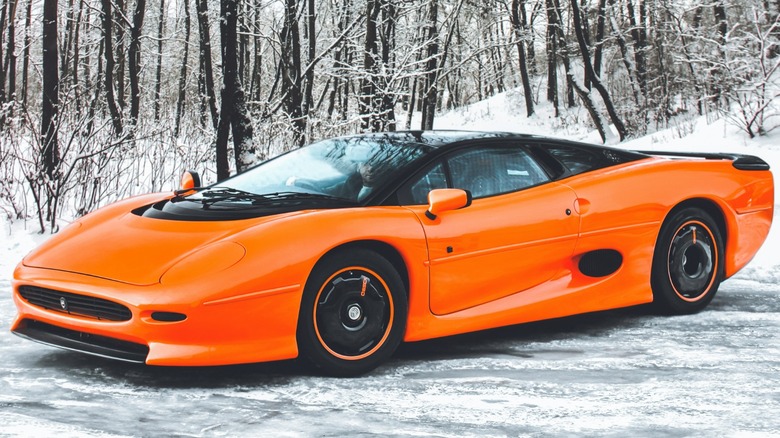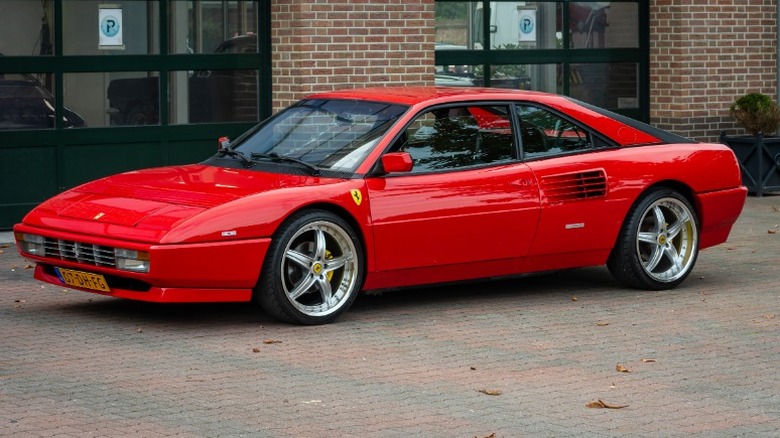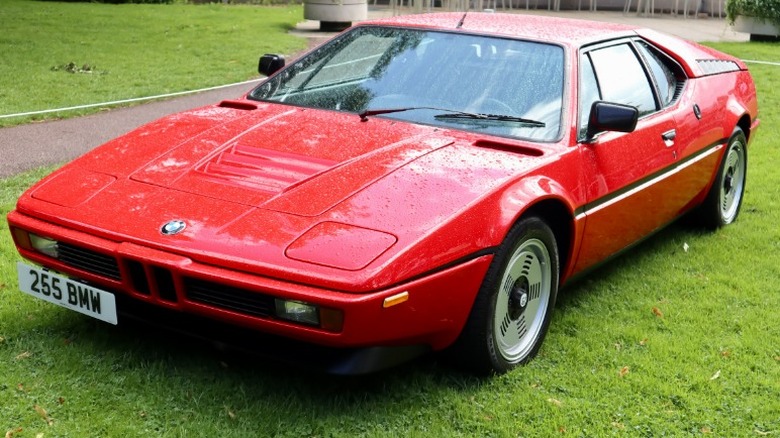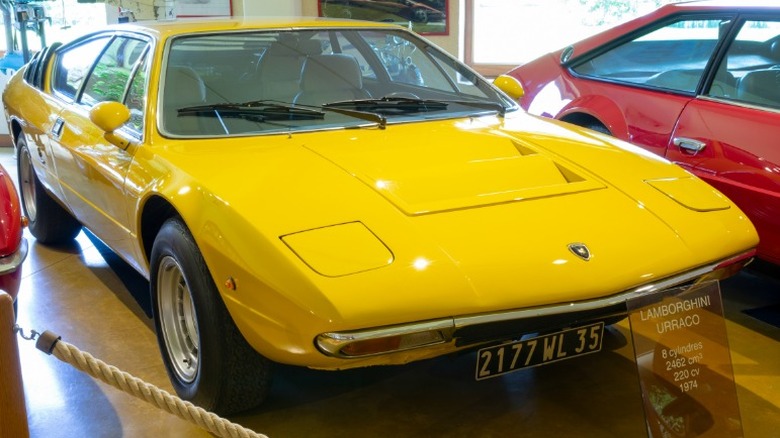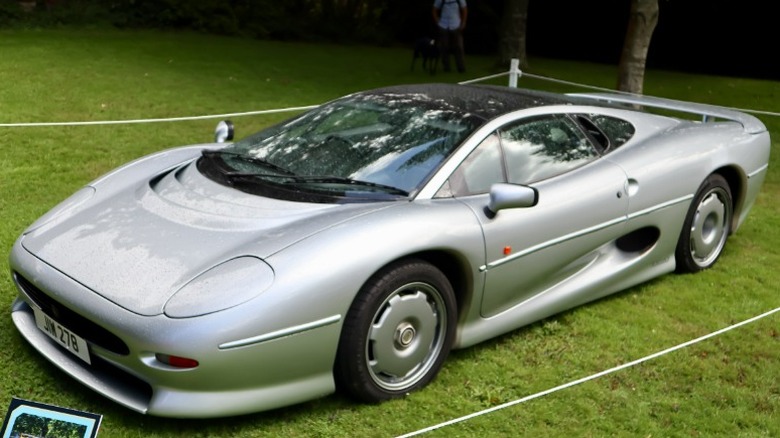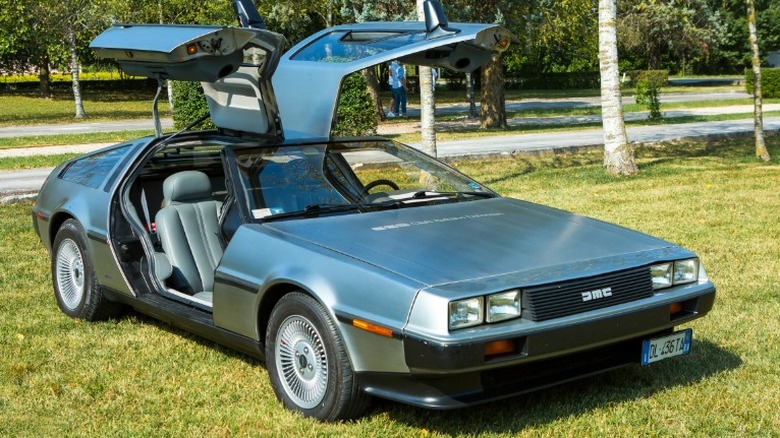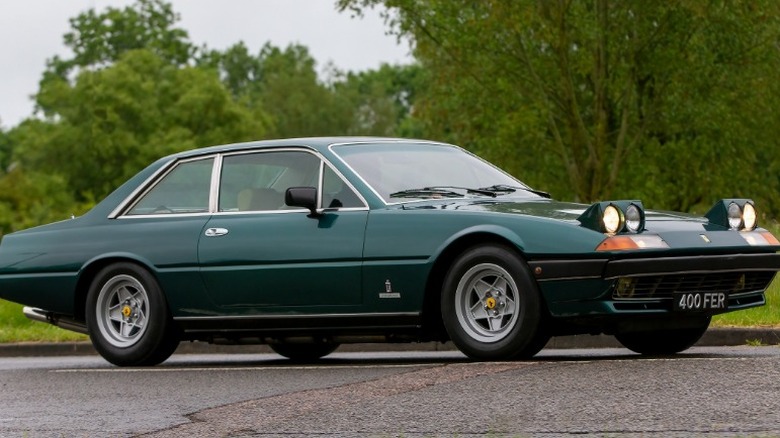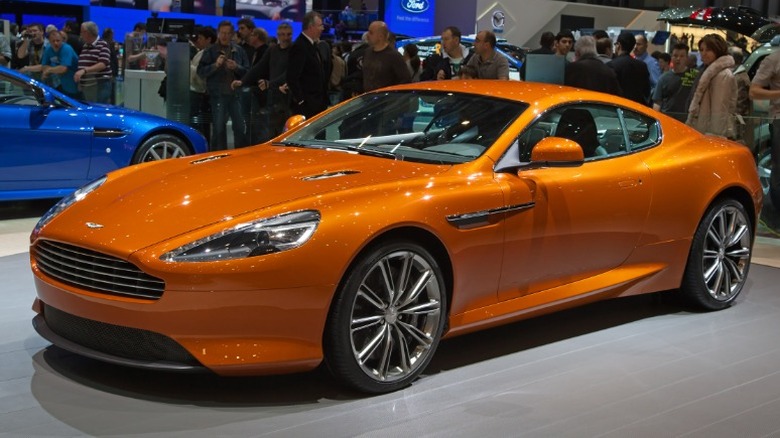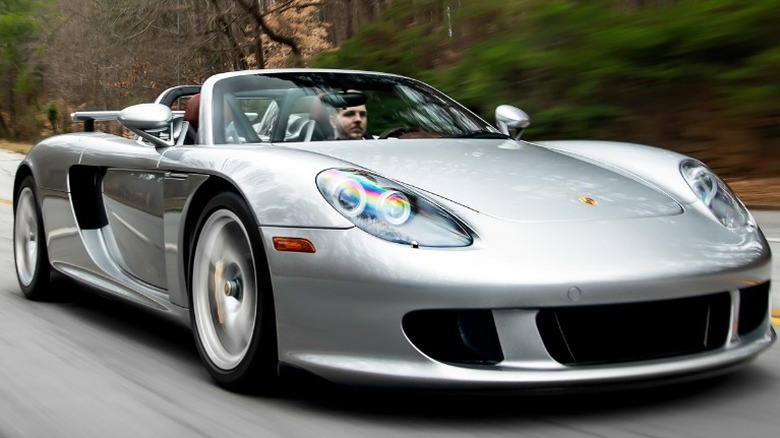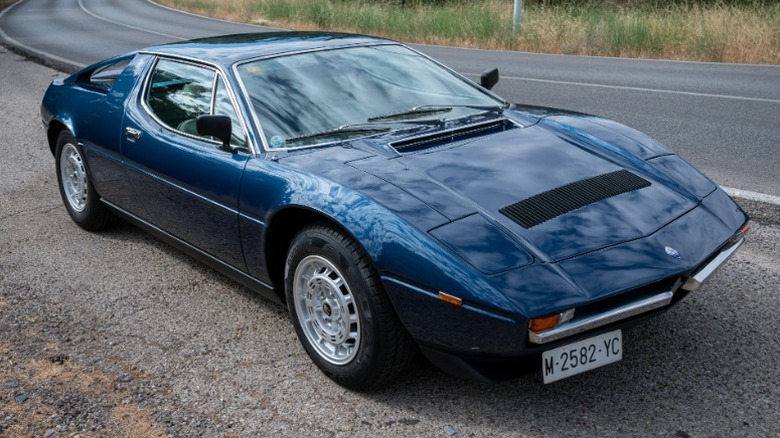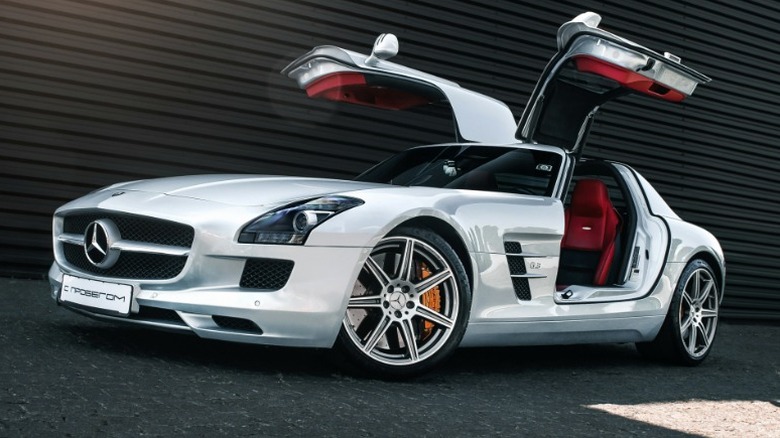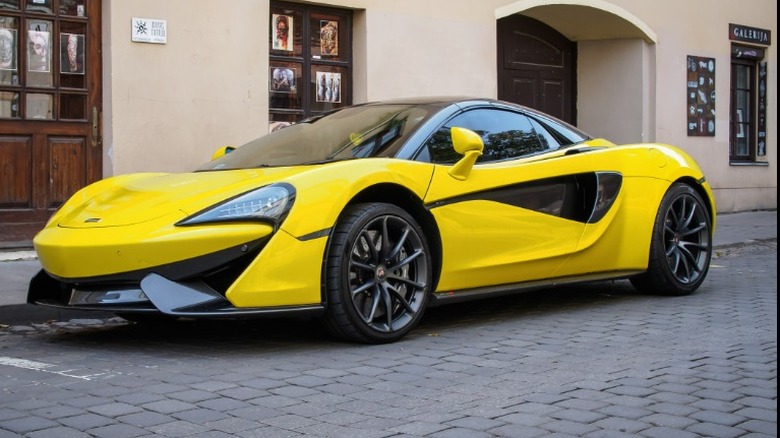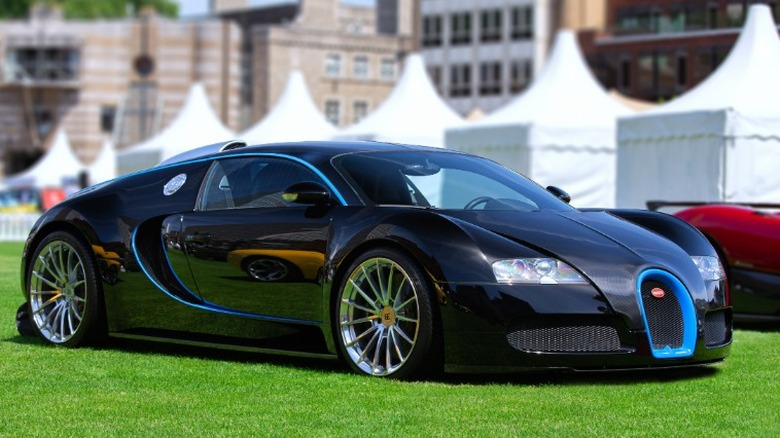The Worst Supercar Model From Every Major Brand
All car manufacturers, even the very best, occasionally produce a model that fails to meet performance expectations, requires excessive maintenance, or just lacks a style that appeals to buyers. Even supercar manufacturers with superior engineering expertise, access to the latest technology, and years of track-tested experience occasionally produce a disappointing vehicle. While there is no clear-cut consensus on what features define supercars, they are generally distinguished from sportscars (and most other cars) by four characteristics. These include blistering straight-line speed and quickness, grip-tight handling with the sensation of taking the turns on rails, fade-resistant braking, designed to bring a fast-moving vehicle to a complete stop in seconds, and exclusive ownership, usually from limited production.
At the high end of the supercar class, hypercars equipped with hybrid powertrains boast acceleration times faster than most supercars, often in the low two-second range. The 1,500-horsepower Bugatti Chiron, which accelerates to 60 mph in a mere 2.3 seconds, reaches a top speed of 261 mph, and sells for more than $3 million.
Selecting the worst from supercar automakers means picking a model that slightly underperforms its siblings or lacks some features, but still competes with the competitors in its class. These are exceptional automobiles but simply fall short of the other models made by the same manufacturer.
Ferrari Mondial
The Mondial was an attempt by Ferrari to produce an economical supercar for Italian automaker enthusiasts who couldn't afford one of the company's full-featured models. The last 2+2 rear mid-engine V-8 the Italian automaker produced was also designed for a family. However, the small rear seats were barely large enough to accommodate young children and certainly uncomfortable for an average-sized adult.
Ferrari manufactured the grand tourer, featuring Pininfarina styling and bodywork by Carrozzeria Scaglietti, between 1980 and 1993. Built on a modified Ferrari 308 platform, the first Mondial 8 used the same powerplant and components. However, cost-cutting measures such as the use of a less expensive and easy-to-maintain unequal-length double wishbone suspension were met with disapproval by sports car critics. Furthermore, the transversally mounted Dino 308 GT4 3.0-liter V-8 engine with a modern K-Jetronic fuel injection system produced a mere 214 horsepower at 6600rpm and 181 pound-feet of torque at 4600rpm. The Mondial 8 required a mediocre 8.3 seconds to reach 60 mph and achieved a top speed of 143 mph.
Ferrari discontinued the Mondial 8 after only one year of production and 703 units produced. In 1982, the automaker introduced the Mondial Quattrovalvole, powered by a 3.0-liter V-8 engine but it produced only slightly more power than the model 8 at 240 horsepower. The Mondial remained in production for 13 years and is considered a success judged by its sales numbers (over 6000 units from all variants sold).
BMW M1
The M1 began as a collaboration between BMW and Lamborghini designed to dominate the Group 4 racing series and replace the aging 3.0 CSL race cars. Homologation obligations required BMW to build 400 road cars. However, Lamborghini filed for bankruptcy before any of the models were built and the racing series dissolved. BMW found some new partners to manufacture the supercar, sourcing major components from various suppliers.
Despite Lamborghini's tenuous financial state, BMW initially hired the Italian automaker to develop the space frame chassis. However, development halted after the prototypes were built, so BMW employed Marchesi, a Modenese chassis builder, to make the production chassis. Gianpaolo Dallara designed the suspension and Giorgetto Giugiaro from Italdesign created the car's wedge-like fiberglass body.
Introduced in 1978, the supercar was powered by a BMW 3.5-liter, DOHC straight-six engine mated to a five-speed ZF manual gearbox generating 274 horsepower and 243 lb-ft of torque. The Coupe accelerated to 62 mph in a respectable 6.0 seconds and achieved a top speed of 165 mph. Uncertainty about the supercar's future and an MSRP of 100,000 Deutsche Marks (about $50,000 in U.S. currency in 1978 and $232,000 adjusted for inflation today) resulted in slow sales and ultimately doomed the M1. Only 455 units (397 M1 road cars and 53 race cars) were built before production was discontinued in 1981. The cars built for the circuit with 470 horsepower engines and gutted interiors weighed 3,000 pounds and none achieved significant success.
Lamborghini Urraco
Inspired by the '70s oil crisis, Lamborghini designed the Urraco (named after a race of fierce fighting bulls) as a less expensive supercar with reduced emissions and better fuel efficiency. The Lambo offered competition for the Ferrari Dino, Maserati Merak, and Porsche 911S. The automaker fitted the car with the company's first eight-cylinder engine.
Produced from 1972 to '79, Lamborghini offered the Urraco with three engine options. The first model, introduced at the 1970 Turin Motor Show as the P250, featured a naturally-aspirated 2.5-liter V-8 that produced 220 horsepower at 7500 rpm and a maximum torque of 165 lb-ft at 3500 rpm. Lamborghini positioned the engine just ahead of the rear wheels (hence the "P" for the posterior position) and mated it to a five-speed manual transaxle that sent power to the rear wheels. The P250 accelerated from 0 to 60 mph in 6.9 seconds and reached 150 mph.
The Urraco P200 came with the smaller 2.0-liter engine producing 182 horsepower and 130 lb-ft of torque, accelerating to 60 mph in 7.2 seconds, and reaching a top speed of 134 mph. Lamborghini offered its best-performing Urraco as the P300 model, equipped with a 3.0-liter mill generating 265 horsepower and 202 lb-ft of torque. The supercar accelerated to 60 mph in 5.6 seconds and achieved a top speed of 162 mph. Although the P300 offered the performance characteristics of a supercar in the 1970s, the engine was detuned for import to the U.S. producing a disappointing 180 horsepower.
Jaguar XJ220
Jaguar produced only 282 XJ220 units during its production years from 1992 to 1994. A worldwide recession dramatically impacted buyer interest in the supercar costing $831,000. Furthermore, high maintenance costs and a poor driving experience helped doom the XJ220. Perhaps even more disappointing was the promise by Jaguar to prospective buyers of a high-performance V-12 and all-wheel-drive system. Instead, the automaker fitted the car with a turbocharged V6 and rear-wheel drive, albeit it was the fastest production car in the world when launched in 1992.
The 3.5-liter DOHC 24-valve 6R4 engine coupled to a 6-speed manual transmission produced an impressive 542 horsepower at 7000 rpm and 473 lb-ft of torque at 4,500 rpm. The 2-door, 2-passenger, mid-engine RWD coupe accelerated from 0 to 60 mph in 3.6 seconds, reaching a record-breaking top speed of 212 mph. The XJ220 recorded a speed of 217 mph on a test circuit without rpm limits and exhaust flow-restricting catalytic converters.
Although some critics lauded the XJ220's good looks, the supercar's handling failed to meet expectations. The frequent maintenance required for Jaguar's high-performance racecar components and limited legal ownership in the U.S. made the XJ220 Jaguar's worst supercar.
DeLorean DMC-12
John DeLorean's stainless steel, gull-winged wedge showed all the promise of a supercar to compete with the best that European models had to offer. An international team of experts and automobile companies contributed to the car's design. Lotus founder and racing legend Colin Chapman provided engineering expertise, Giorgetto Giugiaro created the raked body, and a Peugeot-Renault-Volvo (PRV) V-6 supplied the power. The car was manufactured in Ireland.
Introduced in 1980, the DeLorean was perhaps the most aesthetically distinctive car on the market. Critics loved its classic GT styling and innovative design. The dull silver finish of the raw stainless steel body panels gave the car a stunning appearance. Without paint, owners could buff out small scratches with fine-grain sandpaper. And while the Mercedes-Benz 300SL introduced in 1954, made gullwing doors famous, the film "Back to the Future," with its DeLorean time machine made the vertically opening doors a defining feature.
However, the lackluster 2.8-liter PRV V-6 generated a measly 130 hp and 153 lb-ft of torque, accelerating the sportscar to 60 mph in a disappointing 8.3 seconds, reaching a top speed of 130 mph. By comparison, a 1979 Lamborghini Countach LP400S supercar accelerated to 60 mph in 5.8 seconds, reached the quarter mile in 14.2 seconds, and achieved a top speed of 164 mph. The DeLorean's poor performance contributed to its demise after a short three-year production period and made it one of the worst supercars ever.
Ferrari 400
While Ferrari has produced many of the automobile industry's best-performing supercars for more than 70 years (since 1947), it has also had its share of disappointments, which In addition to the Mondial include the first Ferrari sold with an automatic transmission, the 400. Ferrari equipped the four-seater 400, built from 1976 to 1989, with a naturally aspirated 4.8-liter V-12 front-mounted engine producing 335 bhp at 6500 rpm and 311 lb-ft of torque at 3600 rpm. Power was sent to the rear wheels via a GM 3-speed Turbo Hydramatic. The Ferrari 400 with a curb weight of 4180 lbs (1896 kgs) accelerated to 60 mph in 6.5 seconds and reached a top speed of 152 mph. Ferrari introduced the 400i with Bosch fuel injection in 1979 with better fuel efficiency but a slight loss of performance, reaching a top speed of 142 mph.
A suspension featuring coil springs in both the front and rear provided the 400's road handling and ride comfort, while the GTS Automatic braking system including vented discs both front and rear delivered the stopping power. Although the Ferrari 400 boasted performance specs characteristic of a supercar of the era, the car's style lacked the stunning eye-catching appearance typical of a car in its class.
Aston Martin Virage
The styling of the 1989 Virage falls short of other exotic Aston Martin models and is sufficient to place it at the bottom of the automaker's supercar list. The "parts bin" composition, including interior components from GM, Ford, and Jaguar, VW taillights, and Audi headlights make it arguably the worst Aston Martin ever made.
The traditional GT layout of the Virage featured a front-mounted 5.3-liter V-8 equipped with a Weber-Marelli fuel injection system and heads designed by Callaway. The mill produced 330 horsepower and 350 lb-ft of torque sending power to the rear wheels The Aston Martin Virage accelerated to 60 mph in quick 6.5 seconds, reached the quarter mile in 14.8 seconds, and achieved a top speed of 167 mph. Aston Martin offered two transmission options: a ZF five-speed manual gearbox, installed in about 40% of the cars built, and a three-speed automatic Torqueflite gearbox from Chrysler. In later models, the automaker offered a four-speed automatic and a six-speed manual.
The Virage used a chassis first developed for the Lagonda along with an outdated suspension. The system employed a de Dion tube, triangulated radius rods, and a Watts linkage in the rear. The front suspension was fully independent with double wishbones. The older-design suspension and significant curb weight of 3,946 pounds (despite aluminum bodywork) hampered Virage's handling through the turns. In 1989, the Virage sold for £120,000 (about £255,500 or 317,000 U.S. dollars in today's money).
Porsche Carrera GT
Despite a glowing endorsement by comedian Jerry Seinfeld, the Carrera GT is an outrageously expensive ($448,400 in 2004) attempt to compete with other automakers in the supercar class. Porsche built the Carrera GT from 2004 to 2006 equipped with a 5.7-liter V-10 mid-engine that produced 604 bhp at 8000 rpm and 435 lb-ft of torque and sent power to the rear wheels via a six-speed manual transmission.
The automaker originally designed the convertible GT with a turbocharged flat-six engine but redesigned the car to accommodate the V-10 that was designed for the Footwork Formula One team in 1992, but never used. Car and Driver tests showed the GT accelerated to 60 mph in a blistering 3.3 seconds, reached 130 mph in a mere 10.8 seconds, and the quarter-mile mark in 11.2 seconds doing 132 mph. The American automotive enthusiast magazine compared the Carrera GT to a Ferrari Enzo boasting 650 horsepower with a sales price of $659,430. While the speed and acceleration of the GT were on par with some of the best supercars on the market, it was the dangerous handling that challenged even the most skilled drivers. Once the tail begins to waggle on the way to a top speed of over 200 mph, the car can easily spin out of control.
Maserati Merak
Fitted with a 2.0-liter or optional 3.0-liter V6, the Maserati Merak produced only 187 hp (217 hp in the SS model). The early '70s featured flashy Italian supercars such as the Ferrari 365 GT4 BB, Lamborghini Countach, De Tomaso Pantera, and Lancia Stratos, all of which displayed a wedge-shaped body style but more importantly, a mid-engine design. Each manufacturer endeavored to incorporate race-tested technology into roadgoing cars and Maserati was no different.
The Maserati takeover by Citroen in the late '60s gave the Italian automaker the financing it needed to build a supercar to compete with the other Italian companies. The 4.7-liter V-8 Bora was the result, but Maserati also needed a higher volume entry-level supercar to challenge the upcoming Ferrari 308 GT4 and Lamborghini Urraco. To keep production costs to a minimum, Maserati installed components from the Citroen SM, including the gearbox, hydropneumatic pop-up headlights, braking system, dashboard, and switchgear. However, the Italian automaker installed a fully independent suspension setup that gave the Merak excellent handling characteristics.
In 1975, the 217bhp SS version fitted with upgraded carburetors and built with a higher compression ratio gave the Merek an additional 30bhp. The lighter-weight SS (nearly 100 pounds) performed better through the turns. Although the Merak's stunning looks and engaging performance competed well in the '70s compact Italian supercar market, the model was still the least desirable supercar made by Maserati.
Mercedes-Benz SLS McLaren
Built by a Mercedes-Benz and McLaren partnership from 2004 to 2009, the SLS McLaren boasted state-of-the-art features that distinguished it from other cars in its class. All body panels were made with carbon fiber and the SLR McLaren was the first production car to feature a full carbon-fiber monocoque. The carbon-ceramic brakes resisted fading up to temperatures of 2,200 Fahrenheit. However, the car weighed nearly 4,000 pounds.
The SLS McLaren boasted a 5.4-liter V-8 that generated 617bhp and 575 lb-ft of torque. The supercar accelerated from 0 to 60 mph in 3.5 seconds and reached the quarter mile in 11.5 seconds at 126.1 mph on its way to a top speed of 208 mph. The exceptional braking power slowed the car from 60 mph to zero in a mere 103 feet. Despite its extraordinary speed and quickness, the automotive media criticized the five-speed torque converter automatic.
The SLS McLaren offered some features not found on other supercars of its era. Mercedes placed the single-piece carbon-fiber seats in a low position at precisely 28 degrees for maximum comfort. The HVAC system was connected to a sensor that measured the sun's angle, luminosity, and intensity to achieve an ideal cabin temperature. Under hard braking, the brake lights glowed at twice their normal intensity to advise drivers behind. Despite its impressive credentials, the heavy weight of the Mercedes-Benz SLS McLaren prevented it from reaching the top of the supercar class.
McLaren 540C
McLaren claims its cars exhibit: "Super-light engineering. Extreme power. Race-honed agility." While each supercar in the automaker's lineup boasts these characteristics, perhaps the least impressive model (but not by much) is the entry-level McLaren 540C. At the tail-end of McLaren's Sports Series, the 540C shares many features with the slightly higher-performing 570S. Built with a carbon fiber MonoCell II chassis, it is more suitable for daily driving than weekends on the track. Aluminum body panels contribute to its lightweight, just under 3,000 pounds.
The 540C is powered by the M838T E 3.8-liter twin-turbo V-8 engine, a detuned version of the same engine used in the McLaren 650S. The mill develops 533bhp and 398 lb-ft of torque, compared to 562 horsepower and 443 lb-ft of torque generated in the 570S. Paired with the seven-speed seamless shift gearbox (SSG), McLaren rates the 540C acceleration at 62 mph in 3.4 seconds (0.3 seconds slower than the 570S). The supercar reaches 124 mph in 10.5 seconds and it achieves a top speed of 199 mph (5 mph less than the 570S). Independent tests conducted by Top Gear resulted in slightly faster acceleration times than the McLaren claim but within an acceptable margin of error, reaching 60 mph in 3.1 seconds. Although the McLaren 540C is an exceptional high-performance supercar with an MSRP of $196,000 that competes well with the Audi R8 and the Porsche 911 Turbo in the same price range, it is the worst supercar in the McLaren lineup.
Bugatti Veyron
For several decades, Bugatti has produced some of the most elite and expensive cars in the supercar and hypercar class. However, Veyron's style may not meet everyone's taste, and its appearance is perhaps the least attractive of all the most recent models, making it the "worst" Bugatti supercar.
Bugatti produced the Veyron for 10 years from 2005 to 2015. The MSRP was $1,657,700, however, no two are exactly alike, and all units sold came with buyer-selected custom features. One buyer looking for a luxurious interior spent an extra $72,500 on custom leather. For a U.S. car, the destination charge alone is $100,000 and the guzzler tax is nearly $7,700.
The Bugatti Veyron 16.4 is equipped with an 8.0-liter (488 cubic inches) quad-turbocharged DOHC 64-valve W-16 featuring port fuel injection and an aluminum block and heads. The engine burns 93-octane or higher fuel and must be detuned by the dealer if none is available. The powerplant produced 1001 horsepower at 6000 rpm and 922 lb-ft of torque at 2200 rpm. Car and Driver test results show the Veyron accelerated to 60 mph in a scorching 2.5 seconds and reached 200 mph in a mere 25.5 seconds on its way to a (governor-limited) top speed of 253 mph.
